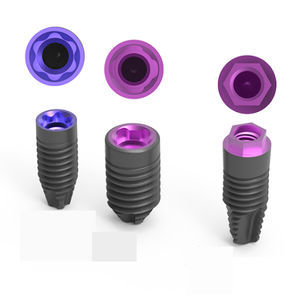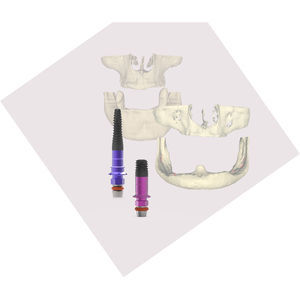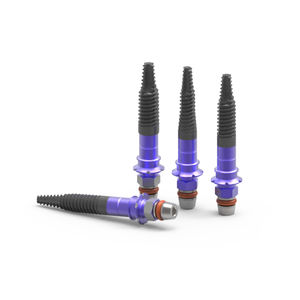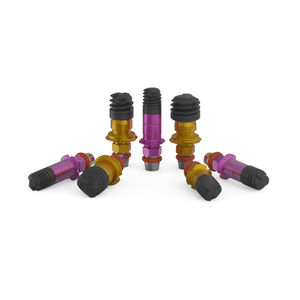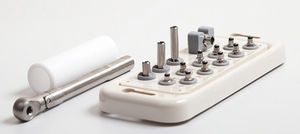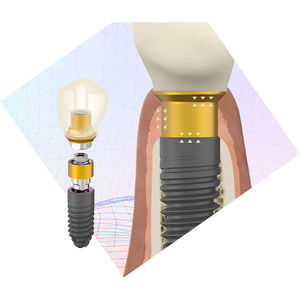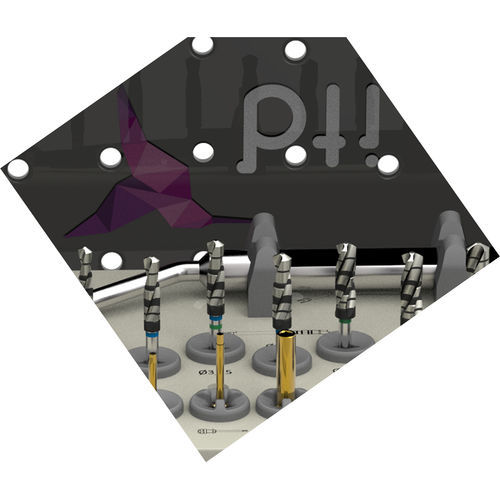
- Surgery unit
- Surgical Instruments
- Surgery burr
- BTI Biotechnology Institute
Dental burr surgerydiamond
Add to favorites
Compare this product
Characteristics
- Applications
- dental, surgery
- Material
- diamond
Description
Biological drilling, developed by BTI, provides numerous clinical advantages such as collecting autologous particulate bone, better control of the direction and depth of the osteotomy, low temperature of the surrounding bone, optimization of the biological bed and improvement of biosafety by reducing aerosols.
BTI has designed drills that are suitable for this technique in order to optimise the process. First, they have a purely apical cut (not lateral), to be able to drill deeper and not wear away the bone walls.
Also, their helical design is very retentive for the bone particles being cut, allowing large quantities of bone to be obtained from the drilling area. The bone obtained is placed into a glass container with the autologous plasma that, as well as keeping it hydrated with the patient's proteins during the surgery, may be used as a particulate autologous graft.
Advantages and benefits of biological drilling
It allows you to collect bone during drilling and, therefore, it can be used as particulate autograft when mixed with the patient's plasma which is obtained with Endoret® (PRGF®) technology
The low working speed doesn't increase the surrounding bone temperature, therefore, we avoid necrosis. Also, because irrigation is not used there is no socket cleaning, achieving a biological bed that is suitable for dental fixing.
It allows you to maintain the direction and control of the working depth.
It reduces mechanical trauma, as well as marginal bone loss.
Catalogs
No catalogs are available for this product.
See all of BTI Biotechnology Institute‘s catalogsOther BTI Biotechnology Institute products
Oral Implantology
*Prices are pre-tax. They exclude delivery charges and customs duties and do not include additional charges for installation or activation options. Prices are indicative only and may vary by country, with changes to the cost of raw materials and exchange rates.



